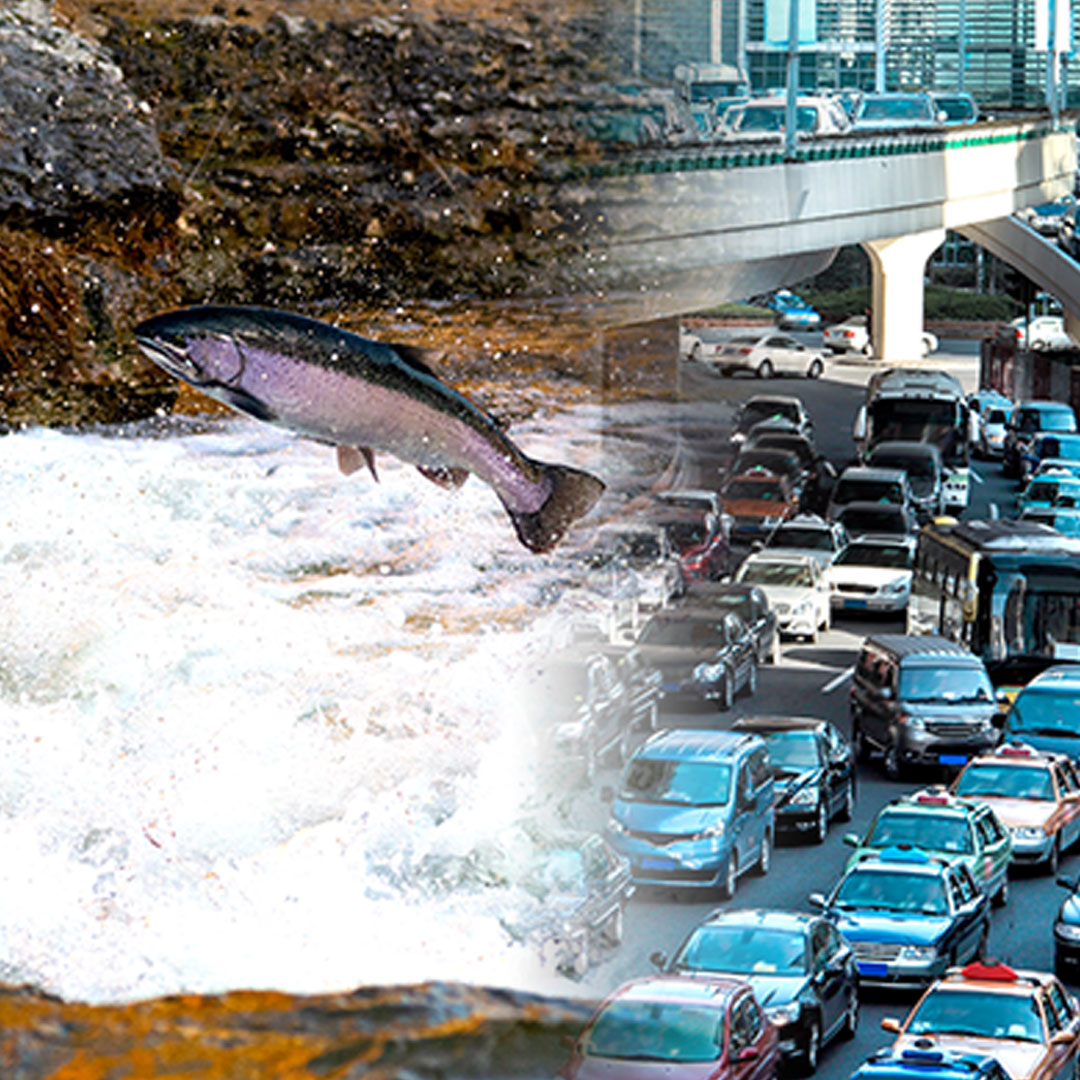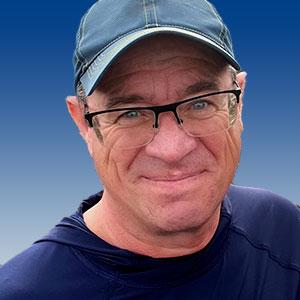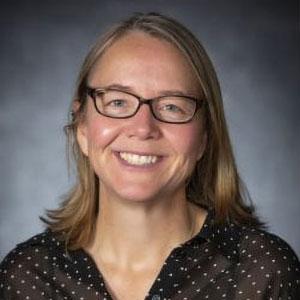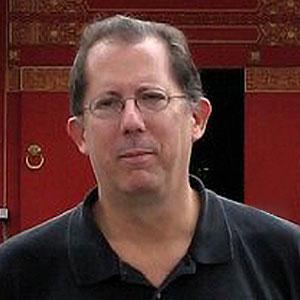Reframing the Clean Water Imperative for Pacific Salmon Recovery

WHEN
Thursday, December 1, 2022
11:00 a.m. - 12:00 p.m. (Pacific Time)
LOCATION
Online
Zoom
PRICE
Free
Check out this video to watch the Reframing the Clean Water Imperative for Pacific Salmon Recovery.
A Speaker Series: Toxicology and Societies - The Impacts of Chemicals in Our Lives
Brought to you by:
WWU Institute of Environmental Toxicology and Chemistry
WWU Alumni Association
In western North America, many salmon and steelhead stocks remain at historically low abundances. For example, to date, none of the distinct population segments designated as either threatened or endangered under the U.S. Endangered Species Act have recovered to the point of de-listing, across the major river basins of California and the Pacific Northwest. At the same time, coastal patterns of human migration, urban/suburban/exurban growth, and associated development are accelerating.
These changes in land cover and land use are increasing non-point source pollution to river networks and estuaries, particularly in the form of toxic runoff from the transportation grid. Motor vehicles are sources of thousands of distinct chemical contaminants, many of which remain unknown or poorly characterized in terms of impacts to salmonids (direct and indirect). Nevertheless, recent advances in technology (analytical chemistry, molecular biology, informatics, modeling) are rapidly restructuring how we think about the chemical dimension of salmon habitats.
This presentation will revisit the long-held assumption that salmon need adequate supplies of cool, clean water to survive and thrive. Specifically, how a canonical understanding of “clean water” in the traditional spheres of salmon management (recovery, regulation, and restoration) can be expanded, to keep pace with recent and rapid advances in modern ecotoxicology.
More information about the speaker series is available here. All past Toxicology and Societies recordings are available here.
Questions and Answers from the Presentation
Overarching comment from Nat Scholz:
NOAA Fisheries separates the role of scientists (e.g., the Northwest Fisheries Science Center) from natural resources managers (e.g., the West Coast Regional Office). Consequently, NOAA scientists do not weigh in on decisions made (or pending) in the policy arena. The firewall helps ensure the independence and objectivity of agency science.
Question: What has been your experience working with land use planners and forestry professionals since these are major drivers of impacts?
Answer: The urbanization research focus doesn’t cross over with forest practices, as forested lands are relatively lower risk for water quality degradation. By contrast, there has been a lot of interest from urban planners, particularly among architects, landscape designers, and others in the green building community. Some of this involves direct outreach (e.g., invited updates for the American Water Resources Association, the American Institute of Architects, etc.), but we more commonly participate in “green cities” networking events, such as those organized by Salmon-Safe, Stewardship Partners, and others. Over the years, we have found these communication channels to be very effective, but more work is needed. For example, fostering more direct links between the latest research finding and ongoing planning by the Puget Sound Regional Council and similar organizations.
Question: The Clean Water Act (CWA) of 1972 did not protect Waters of the United States (WOTUS) from non-point source pollution such as agricultural and stormwater runoff. In the 50 years since the beginning of the CWA for the WOTUS, why has this omission in the CWA not been corrected because non-point source pollution is directly related to Pacific Salmon Recovery?
Answer: This question is in the policy arena; there are important reasons why non-point source pollution is so difficult to address – in part, the sheer diversity of human activities that intentionally or unintentionally release chemicals into basin-scale landscapes, often unpredictably in space and time, and often involving emerging contaminants with little or no associated health data for salmon or their habitats.
Question: Given that there will not be a quick solution to the "tire dust" issue what other mitigation / adaptation paths should be pursued?: a. storm water filtering (monumental challenge likely), b. selective breeding for more resistant populations (by farming? - and it's controversies) and if the latter who would pursue - and maybe involve native Americans (not to ignore their role/consequences in this).
Answer: Again, mitigation is a management objective. However, this is an open societal question – i.e., how to ensure clean water over large scales, in the face of major development pressures? Selective breeding for resistance would likely be futile, in part because there are so many different toxics in stormwater, that target different organ systems, via different molecular mechanisms. Green infrastructure works but, as noted, represents monumental challenges of cost, scale, maintenance, etc.
Question: Curious how we deal with tribal resistance to bioassays? Or has this changed? When we were doing the site hazard evaluation on Indian Island, tribal representatives did not allow bioassay because continued use of the U&A harvest site on the Island was more important than knowing if the shellfish were contaminated.
Answer: To date, our research group has not encountered Tribal resistance, and thus I don’t have an informed opinion about the shellfish issue raised. To the contrary, certain Tribes (e.g., Stillaguamish, Suqamish) have been important supporters and partners of the salmon science.
Question: Are there any issues with leakage from recycled tires in, for example, playground ground cover?
Answer: This is a recurring question, with answers likely forthcoming in 2023, from several (non-NOAA) research groups. From direct experience, we can say that soaking tire fragments produces a leachate that is demonstrably toxic to coho. We weren’t thinking about playgrounds when we designed those studies, however, so our findings are preliminary in that sense.
Question: Which chemical poses the greatest threat to salmon in Washington?
Answer: No easy answer, in part because there are multiple species of salmonids in WA, with different life histories, migration and residence patterns, physiology, etc. Threat, or risk, is usually a combination of exposure (how frequently, and at what concentrations) combined with the inherent hazard of the chemical (cyanide vs. caffeine). That said, in the context of this presentation, 6PPD-q clearly represents a high-priority threat to the remaining wild coho populations in WA, and to a lesser extent steelhead. We’re planning additional research on steelhead and Chinook, as these species are somewhat new to the risk equation, relative to two decades of studies on coho.
Question: During the Covid 2020 early shutdown, there was a measurable amount of CO2 reductions, with vehicle trip reductions throughout the world. This allowed us to see how quickly we could change and adapt to allow for a cleaner environment. The problem is, it seems we have all quickly returned to the classic business model in transportation for work. This appears to be less the case with environmental positions. What can be done to get workgroups and communities to work harder towards a hybrid work lifestyle?
Answer: A great observation, and it would have been very interesting to implement an intensive field effort during the height of covid, to see if the reduced regional traffic load might lessen the cumulative coho spawner mortality rates we’ve previously documented. We discussed this, but it was impractical at the time. However, we’ve approached the same question in a different way, which is to collect urban roadway runoff across multiple storms (over multiple years), with shorter/longer antecedent dry intervals, representing less or more cumulative traffic. None of this appears to matter very much to the fish – the runoff was almost always highly toxic to coho. This suggests a reservoir of contaminants on road surfaces, but the details of 6PPD-q environmental fate and transport are still being worked out.
Question: How are the chemicals chosen for water quality monitoring purposes when Pacific Salmon Recovery is the subject of study?
Answer: We’re not a water quality monitoring group – this is more the purview of the USGS (among federal agencies), or state-level players (Ecology, WDFW, King County, etc.). A lot of site-specific monitoring is tied to municipal and industrial discharge permits, which are based on contaminants with established aquatic life criteria. This in turn can skew the analyte list towards familiar pollutants (e.g., PCBs, metals) or what I termed ancestral water quality stressors (temperature, dissolved oxygen), and less emerging contaminants.
Question: How do you scientists feel about pushing the politicians harder? I worry that the science community is too far removed from not "politics" but from politicians. I know there's this idea that there's always "one more salmon" before extinction but that's a troublesome notion and salmon are out of time for us to fix the worsening mess we created for them.
Answer: The answer likely depends on whether the scientist in question is an academic or a government researcher. Academics speak for their research teams, and are generally free to advocate for management solutions, and push politicians directly. On the government side, particularly for those of us in the federal executive branch, there are bright lines that separate us from the legislative branch. Nevertheless, politicians are free to ask us for technical briefings, and they can query us directly on the state of the science – for example, in the process of developing new legislation. This happens frequently at the state and federal level. For example, my group was extensively involved in briefing the WA and CA legislatures on the toxicity of copper to salmon, in advance of the state and subsequently national phaseout of copper and other metals from vehicle brake pads. More recently, on the topic of 6PPD-q, I’ve briefed WA House staffers on several occasions, over the past year alone. So, we’re connecting the dots to the politicians, to the extent we can.
Question: How much will the drought intensify this?
Answer: Unknown, but an active area of investigation for us. We know the vector angle, but not the magnitude.
Question: Would they address the impacts of lost habitat because of sewage runoff via pipe outfalls and stormwater runoff, and also the impacts the industrial shellfish farms are having on our near shores and eelgrass beds - nurseries for salmon?
Answer: This is also a poorly-understood topic – specifically, the impacts of chemical contaminants (if any) on macroalgae in Puget Sound. We’ve internally discussed the possibility of new research on bull kelp and eelgrass beds, but have not to date had the resources to pursue these habitat questions. Eelgrass is well-known to be sensitive to nutrient loading, for example, but almost nothing is known about emerging chemicals (pharmaceuticals, plasticizers, tire chemicals, etc.).
Question: What is being done to eliminate chemicals such as 6PPD-quinone from products that contain such chemicals?
Answer: Currently, the states are in the lead on this issue, particularly those with agencies focused on green chemistry, product replacement, etc. This is outside of our NOAA science lane; rather, see ongoing initiatives in CA as an example, or the green chemistry initiative that WA Ecology is spearheading. I should also note that 6PPD plays a very important role in vehicle safety (the structural integrity of tires), so likely a decadal timeline for a safe alternative.
Question: Are concentrations of DOC adequately considered when setting clean water regulations?
Answer: Yes, but primarily in the context of metals, as dissolved organic carbon plays a determining role in metals bioavailability to the fish gill (higher DOC -> more metals complexation -> lower bioavailability -> reduced toxicity). Roadways are generally enriched with DOC (soot), so something we and others will be looking at in future studies.
Question: Will a large scale transfer away from internal combustion engines to electric cars, buses, etc in the urban environment change the nature of urban runoff into streams?
Answer: As long as vehicles are powered by petroleum (gas, diesel), internal combustion engines will discharge PAHs to transportation corridors. There are other contaminants from vehicle tail pipes, and other sources of PAHs in urban watersheds, but this a major link.
Question: What do you think is the best way to communicate the importance of this issue to people who may be more concerned about human health vs. fish health?
Answer: As vertebrates, humans and fish share a lot of biology, in terms of vulnerability to environmental toxicants. Our work on PAH cardiotoxicity, for example, has garnered a lot of attention among researchers who study elevated rates of heart disease and cardiac morbidity among people in dense urban landscapes (e.g., megacities in China). More generally, we’ve focused on salmon as sentinels for a changing environment, in part because salmon play such an important role in the culture, health, and well-being of many communities, particularly those in underserved or underrepresented urban areas. In this context, salmon and human health are interdependent concepts.
Question: What is the natural pre-spawn mortality rate?
Answer: For coho in Puget Sound, this should be close to zero, unless there’s some kind of unusual event – e.g., returning spawners becoming trapped in river side channel habitats during high flows. To explore this directly, we conducted daily surveys on a non-urban reference stream in the 2000s (Fortson Creek, near Darrington). That year, the natural mortality rate was around 1%. It gets more complicated in watersheds where there are too many spawners for the available habitat, mostly in BC and Alaska (density-dependent pre-spawn mortality). Also, other human activities can exacerbate natural mortality, by crowding fish into areas with high predation, disease outbreaks, etc.

Nat Scholz
Speaker
Nat is a aquatic conservation biologist with a research focus on pollution threats to coastal watersheds and marine habitats. He has led the multidisciplinary Ecotoxicology Program at NOAA’s Northwest Fisheries Science Center since 2004, after joining the Center in 1998 as a NAS/NRC postdoc. Prior to that he completed a doctorate in zoology from the University of Washington, as well as Masters and undergraduate research in Boston University's Marine Program in Woods Hole. He has published widely on the chemical ecology of the Anthropocene, at scales ranging from gene expression to the dynamics of at-risk populations and communities.

Ruth Sofield
Co-Host
Ruth Sofield is a Professor of environmental toxicology and chemistry in the College of the Environment. She received her PhD and MS in Environmental Science and Engineering at the Colorado School of Mines. Ruth’s research group focuses on the effects of water and air pollution. Their current projects include the aquatic toxicity of microplastic and tire wear particles, and the use of moss as a biomonitoring tool for particulate matter. Ruth is a member of the Puget Sound Partnership Science Panel and the President of the Pacific Northwest Society of Environmental Toxicology and Chemistry.

Tracy Collier
Co-host
Tracy Collier received his PhD in Fisheries Sciences from the University of Washington. He has worked for over 45 years as a toxicologist, with more than 35 of those years spent at NOAA’s Northwest Fisheries Science Center, where he served as the director of a science division that employed up to 100 people, covering several disciplines, including environmental toxicology, analytical chemistry, harmful algal blooms, and watershed processes. He has over 175 scientific publications, and currently is an affiliate faculty at Western.
Questions and Accommodations
Contact the WWU Alumni Association for this event. Feel free to call at (360) 650-3353 or email at alumni@wwu.edu if you have any questions or comments.
There will be auto-captions available for the Zoom webinar.